Millicell® Ultra-Low Attachment Plates Spheroid Formation Performance Comparison
- 3D Cell Culture Methods
- Millicell® ULA Plate Attributes
- Spheroid Formation Results
- Evaluating Spheroid Roundness
- Evaluating Spheroid Circularity
- Materials
3D Cell Culture Methods
A common in vitro alternative to the more traditional 2D cell culture or animal models, 3D cell culture has important diverse biological applications including novel drug discovery, cancer research, and neuroscience. 3D cell culture models can generally be split into two categories: scaffold and scaffold-free methods. The scaffold-free method allows researchers grows cells without any physical supports such as hydrogels or other physical scaffolds.
Cells grown without scaffolds form 3D aggregates that are also known as spheroids. These spheroids are physiologically relevant cellular models, as the cells can directly interact with other cells, the extracellular matrix (ECM), and their substrates. Because of their biological relevance, the spheroids are often used by researchers in multiple cellular applications, including high-throughput drug development and toxicology screenings.
Millicell® ULA Plate Attributes
Millicell® Ultra-low Attachment plates are 96-well plates that are pre-coated with an ultra-hydrophilic polymer to promote the spontaneous formation of uniform spheroids. The non-cytotoxic, stable, and non-adhesion surface of the U-bottom wells promotes the self-assembly of spheroids in a high throughput environment.
The Millicell® ULA plates have high optical clarity, allowing for fixing, staining, and both brightfield imaging and confocal microscopy. The Millicell® ULA plates are recommended for below 20x magnification, as the U-bottom well negatively impacts focal plane flatness at higher than 20x magnification.
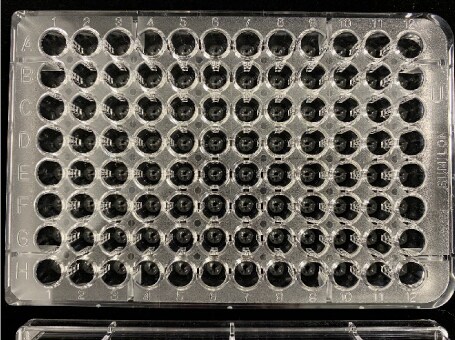
Figure 1. Millicell® Ultra-low attachment plate. The numbering at the top and bottom of the plate makes it easy to navigate the 96-wells, and the frosted surface helps to fight glare from light and improve plate reading.
Here we show the similarities and differences between the Millicell® ULA plates and a competitor plate (Competitor A) to demonstrate spheroid formation, roundness, and circularity. Competitor A and Millicell® ULA plates are both 96-well U-bottom plates:
Spheroid Formation Results
Spheroid formation for the three cell lines A549, HeLa, and MCF7 was tested using the Millicell® ULA U-bottomed 96-well plates and Competitor A plates to monitor uniformity. For the spheroid formation, imaging, and analysis protocol, click here.
All three cell lines formed spheroids successfully and grew at similar rates in the Competitor A and Millicell® ULA plates. In both plates the A549 cell lines formed looser spheroids that required several days to compact before the spheroid started growing. The HeLa and MCF7 cell lines grew linearly and formed spheroids within 24 hours of seeding in both the Competitor A and Millicell® ULA plates. There were no significant differences between spheroid formation and growth on the plates.
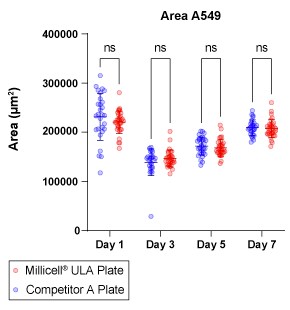
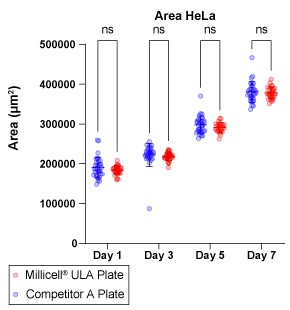
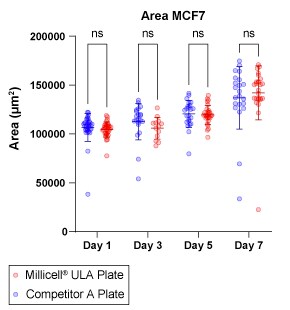
Figure 2. Millicell® ULA plates spheroid formation compared to formation in the Competitor A plate. A) A549 cells; B) HeLa cells; C) MCF7 cells. There was no significant difference in spheroid formation for any of the cell lines.
Evaluating Spheroid Roundness
Spheroid shape is an important analysis used to evaluate spheroid formation. Spheroid roundness is a common method used to quantify and analyze spheroid shape.
For more information on calculating spheroid roundness,visit our evaluating spheroid roundness and circularity protocol.
The roundness of the spheroids formed in both the Millicell® ULA plates and Competitor A plates was calculated using the roundness formula. Using this formula, perfectly round spheroids will have a roundness value of 1 or near 1. The spheroids formed in both the Millicell® ULA plates and Competitor A plates had equivalent roundness across all cell lines tested. The Millicell® ULA plates spheroids had a roundness value of 1 (Figure 3).
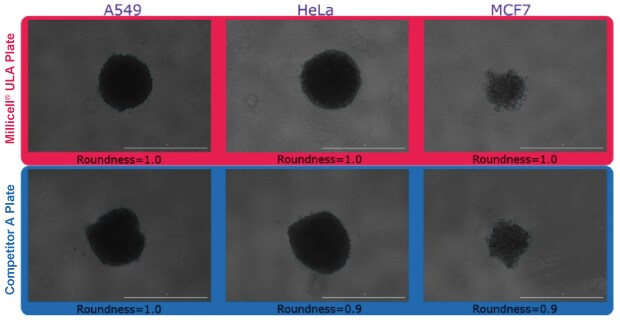
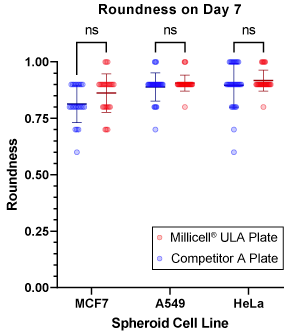
Figure 3. Brightfield imaging of spheroid roundness for spheroids formed using Millicell® ULA plates and Competitor A plates. A) A549 cell line spheroid; B) HeLa cell lines spheroid; C) MCF7 cell line spheroid; D) Quantification of spheroid roundness between the Millicell® ULA plates and Competitor A plates.
Evaluating Spheroid Circularity
Spheroid circularity is also used in the literature to evaluate spheroid formation. Circularity of a spheroid refers to the surface and smoothness of the spheroid. Rough and bumpy spheroids will have a lower circularity value than smooth spheroids, and smoother and more circular spheroids will have a higher circularity value. Because different cell types can form different spheroid shapes, certain cell lines will naturally have higher circularity numbers.
The Millicell® ULA plates and Competitor A plates performed equivalently with no statistical difference between the circularity values of the various cell lines (Figure 4). The MCF7 cell line exhibited a lower circularity value than the A549 and HeLa cell lines (Figure 4), but this was comparable between the plates.
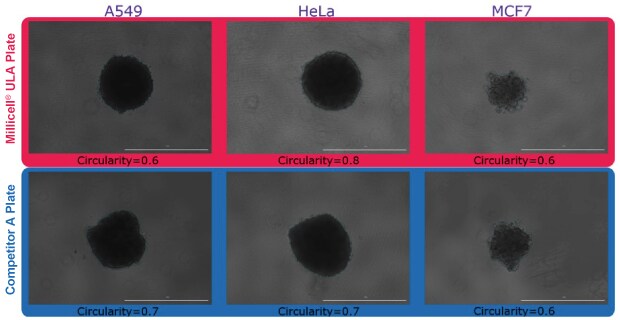
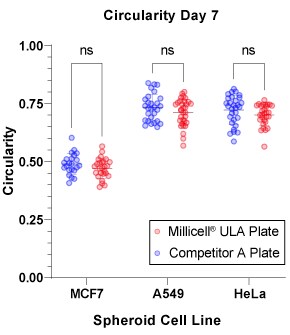
Figure 4. Brightfield imaging of spheroid circularity for spheroids formed using Millicell® ULA plates and Competitor A plates. A) A549 cell line spheroid; B) HeLa cell lines spheroid; C) MCF7 cell line spheroid; D) Quantification of spheroid circularity between the Millicell® ULA and Competitor A plates.
Related Materials
To continue reading please sign in or create an account.
Don't Have An Account?